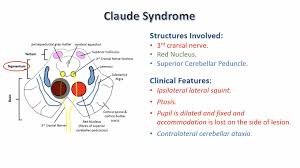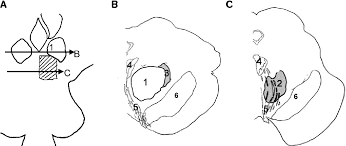Understanding Claude Syndrome: Symptoms, Treatment, and Radiology Insights
Have you ever heard of Claude Syndrome? It’s a rare but important medical condition that affects a part of the brain called the midbrain. Understanding this syndrome is crucial, especially for those in the medical field or anyone interested in neurology. This guide will go over everything you need to know about Claude Syndrome, including its symptoms, treatment options, and radiology insights. We will also compare it to Benedikt and Weber’s Syndromes and offer easy ways to remember its features. Let’s dive in and explore this intriguing topic!
What is Claude Syndrome?
Claude Syndrome occurs when there is a stroke or other damage in the midbrain, which is a part of the brainstem. The midbrain is responsible for many important functions, including movement and sensation. When there’s damage, it disrupts these functions leading to specific symptoms.

Claude Syndrome Symptoms
People with Claude Syndrome often experience a mix of symptoms. These can include:
- Oculomotor Palsy: Problems with eye movement and drooping eyelids (ptosis).
- Contralateral Ataxia: Lack of coordination on the opposite side of the body from where the brain damage occurred.
Understanding these symptoms can help doctors quickly diagnose and treat Claude Syndrome, making early detection vital.

Radiology Insights for Claude Syndrome
Radiology, especially MRI scans, plays a crucial role in diagnosing Claude Syndrome. These scans can show exactly where the damage in the midbrain is occurring. By looking at the MRI images, doctors can pinpoint the lesion and determine the best course of treatment. The typical radiological sign of Claude Syndrome is a lesion affecting the dorsomedial part of the midbrain.

Claude Syndrome Treatment Options
Treating Claude Syndrome usually involves managing the symptoms and addressing the underlying cause. Here are some common treatment strategies:
- Medication: Drugs to control symptoms like muscle relaxants for ataxia.
- Physical Therapy: Exercises to improve coordination and strength.
- Surgery: In some cases, surgery might be required to repair blood vessels or remove any obstructions causing the stroke.
Early treatment can significantly improve outcomes, so getting medical help promptly is crucial.

Comparing Claude Syndrome with Benedikt and Weber’s Syndromes
Claude Syndrome is often compared to other midbrain syndromes like Benedikt and Weber’s Syndromes. Here’s a brief comparison:
- Benedikt Syndrome: Similar to Claude Syndrome but also includes tremors and weakness on the opposite side of the body.
- Weber’s Syndrome: Primarily affects eye movement and facial muscles, often more severe than Claude Syndrome in terms of motor function impairment.
Understanding these differences helps medical professionals accurately diagnose and treat these conditions.

Mnemonic Devices for Remembering Claude Syndrome
Memorizing medical information can be challenging, but mnemonics can help. For Claude Syndrome, you can use the mnemonic “CLOVER”:
- C – Contralateral Ataxia
- L – Lesion in Midbrain
- O – Oculomotor Palsy
- V – Vascular Cause (often stroke)
- E – Eye Droop (ptosis)
- R – Radiology Insights (dorsomedial lesion)
This simple mnemonic can make it easier to recall the key features of Claude Syndrome.
Common Questions about Claude Syndrome
1. What causes Claude Syndrome?
The primary cause is a stroke that affects the midbrain. Other causes can include tumors, infections, or traumatic injuries.
2. How is Claude Syndrome diagnosed?
Diagnosis typically involves a combination of clinical examination and radiological imaging, such as MRI scans.
3. Can Claude Syndrome be cured?
There’s no cure for Claude Syndrome, but treatments can manage symptoms and improve quality of life.
4. Is Claude Syndrome common?
No, Claude Syndrome is quite rare.
5. How can one prevent Claude Syndrome?
Preventing strokes by managing risk factors like high blood pressure, diabetes, and obesity can reduce the risk of developing Claude Syndrome.
Final Thoughts and Next Steps
In summary, Claude Syndrome is a rare but significant condition that affects the midbrain, leading to unique symptoms, including oculomotor palsy and contralateral ataxia. Early diagnosis using radiology can aid in managing the condition effectively. Treatment involves managing symptoms and addressing the underlying cause, often a stroke. Understanding and recognizing Claude Syndrome can make a huge difference in patient outcomes.
If you’re interested in learning more, consider reading up on related syndromes like Benedikt and Weber’s or looking at detailed radiology case studies. Remember, knowledge is power, and being informed can help you take the next steps in learning or assisting those affected by this condition.

